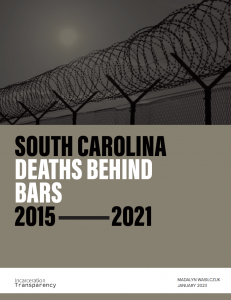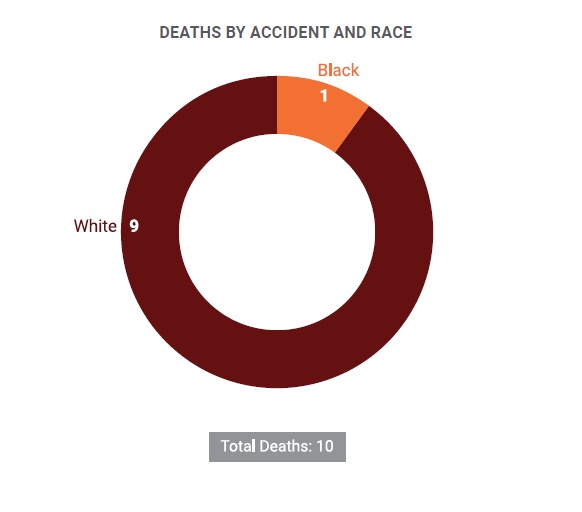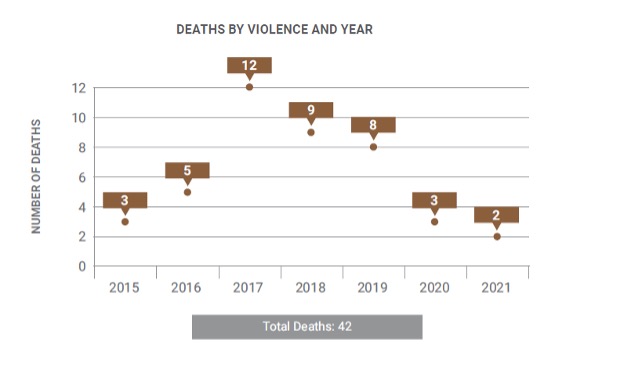Report Excerpts
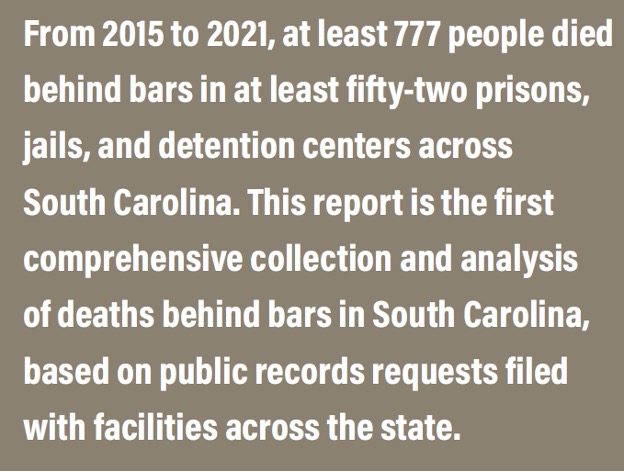
Who is Dying?
Race, Sex, Age & Trial Status
Race
Of the 777 known deaths from 2015 to 2021, Black people accounted for 49.03% of deaths (381) and white people comprised 49.03% of deaths (381). The remaining 15 deaths (1.9%) listed race as unknown.
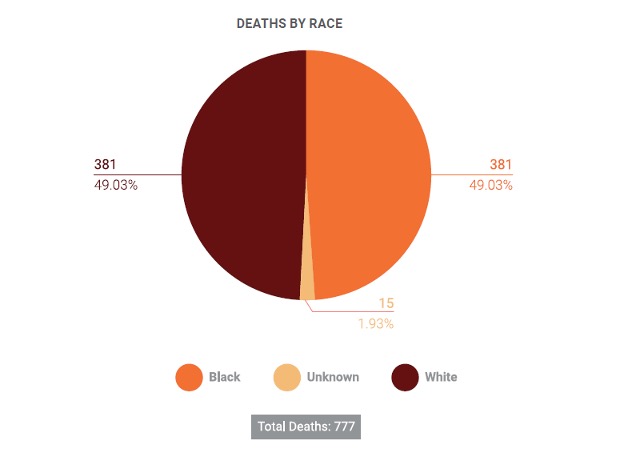
Sex
Carceral deaths in South Carolina reflect the wide disparities in incarceration rates for men and women. Men represent 93% of people incarcerated after conviction, while women comprise only 7%. Men accounted for 93.82% of known deaths behind bars (729) versus 6.18% (48) for women. Medical deaths were the leading cause of death for both men and women and made up 66.67% (32) of women’s deaths and 67.63% (493) of men’s deaths.
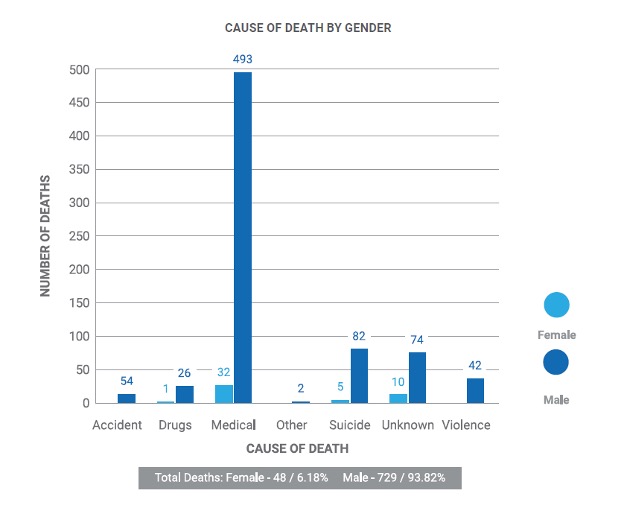
Age
Known deaths behind bars in South Carolina range from age sixteen to ninety-five years old. Overall, people from fifty-six to sixty years old make up 14.03% of deaths, while people sixty-one to sixty-five make up 13.51% and those fifty-one to fifty-five make up 13.13%.
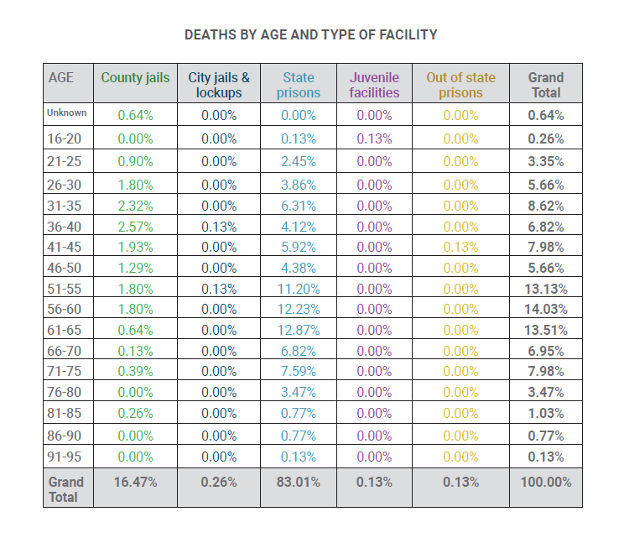
Trial Status
Approximately 85% of people who died behind bars were convicted and serving a sentence for a crime. One hundred nine people who remained legally innocent and awaited trial represented 14.03% of known deaths from 2015-2021. People also died in jails while they were civilly committed (1 death), on a parole hold (1 death), or on a probation hold (2 deaths).
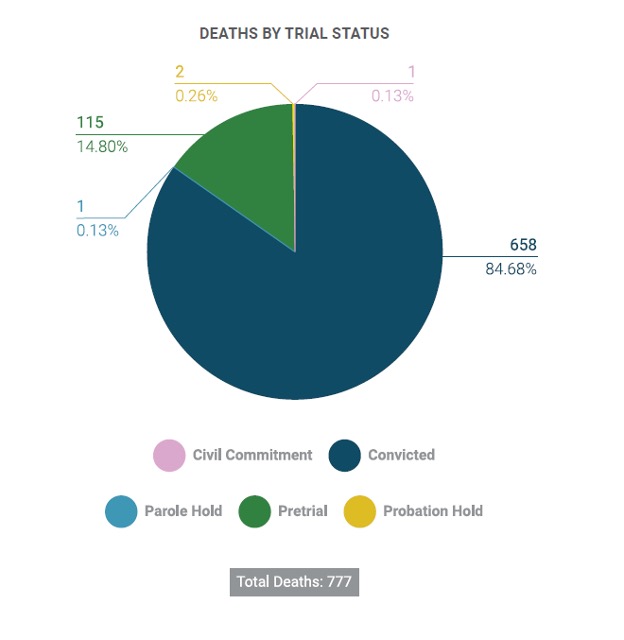
Where are they dying?
Type of Facility & Location within Facility
Type of Facility
Of the 777 known deaths from 2015-2021, the majority occurred within SCDC facilities, though deaths occurred in each type of facility during the time in question.
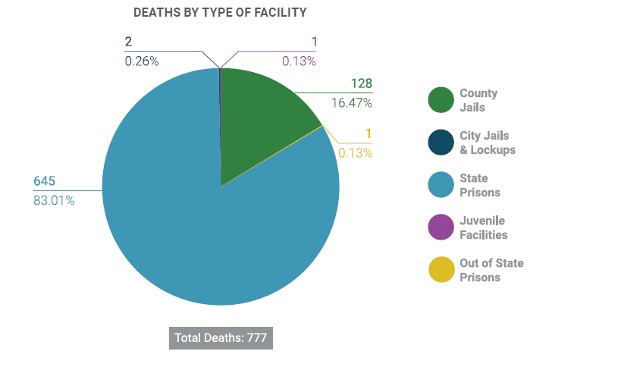
Location of Death within Facility
Approximately half of deaths (50.58%) occurred in a medical facility, which is consistent with medical illness as the leading cause of known deaths. Unknown death locations account for 36.68% of deaths not because the location is unknown by those working in the facility, but because the records obtained did not include that information.
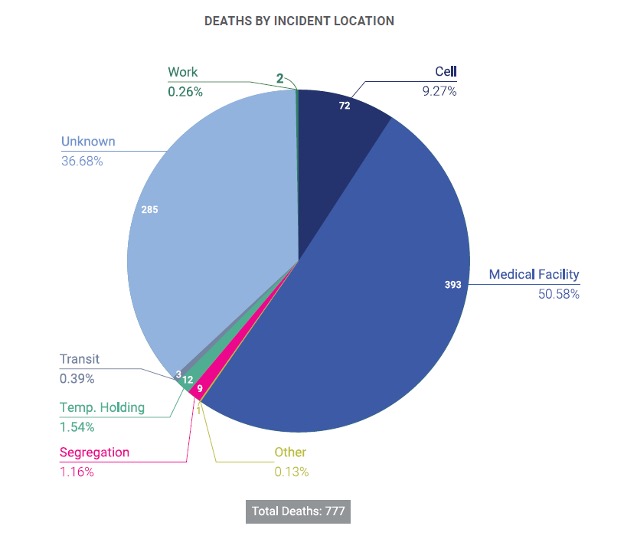
Why are they dying?
Medical, Suicide, Drugs, Accident, & Violence
Medical
Medical deaths comprised 525 of the 777 deaths in custody, or 67.57%.
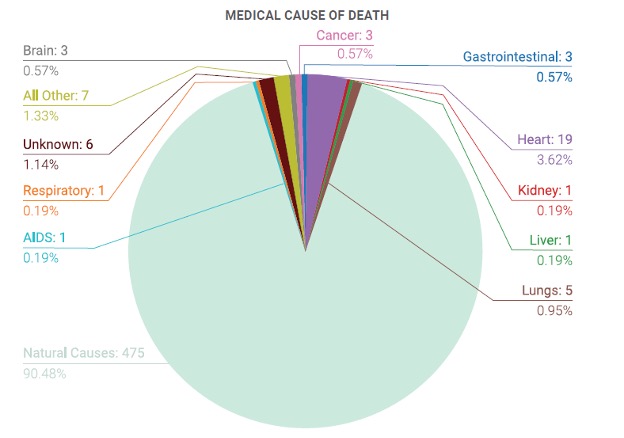
Suicide
Suicide deaths made up 11.20% (87) of all deaths in custody over the reporting period.
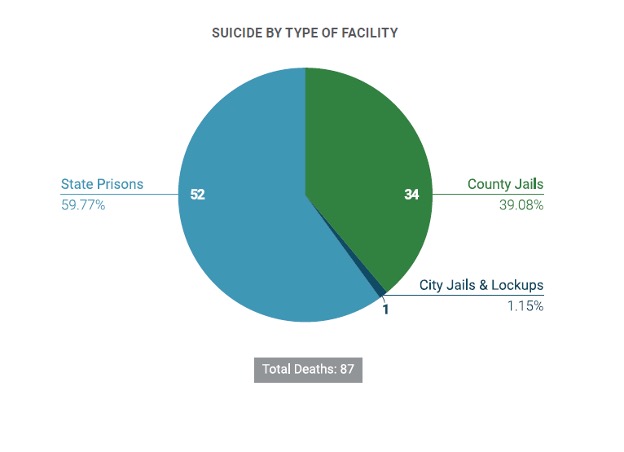
Drugs
Nationally, drug deaths make up a higher share of deaths in jails than in prisons, and that is also true in South Carolina.51 Even so, the raw number of deaths due to drugs is higher in SCDC facilities (16 deaths, 59.26%) than in jails (10 deaths, 37.04%).
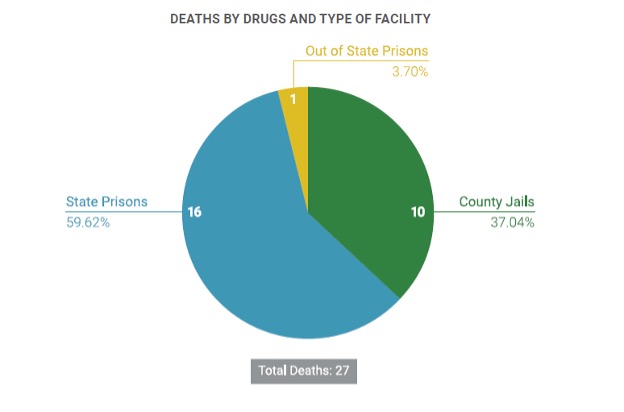
White prisoners were more likely than Black prisoners to die because of drug or alcohol intoxication (18 deaths, 66.67% and 9 deaths, 33.33%, respectively).
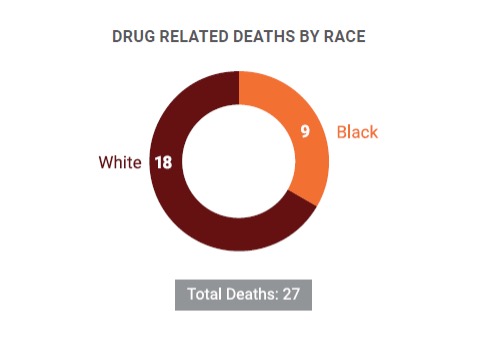
Accident
Accidental deaths accounted for ten in-custody deaths during the reporting period, nine of which occurred in SCDC custody.
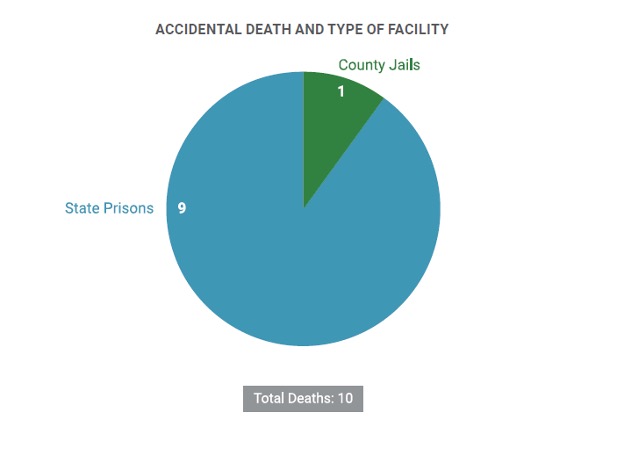
Nine out of ten of those who died of accidental causes were white.
Violence
All violent deaths (42) during the reporting period occurred in SCDC custody. Unlike deaths due to drugs, accidents, or suicides, Black prisoners were more likely to die violent deaths (66.67%, 28 deaths) than white prisoners (30.95%, 13 deaths).
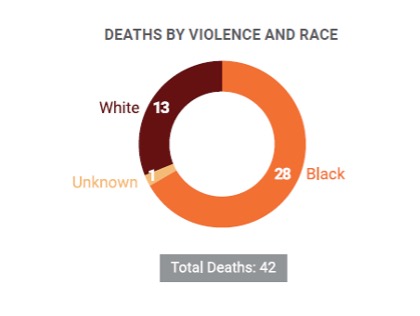
The most violent year in SCDC custody was 2017, when there were twelve deaths, even though the most violent single incident during this period occurred at Lee Correctional in 2018, leaving seven men dead.
Conclusion
This report provides the first ever analysis of deaths behind bars in South Carolina prisons, jails, and youth detention centers. Thirty-five city and county facilities did not respond to our requests, either to confirm that they no longer hold people in custody or to provide requested records. Though the records received are incomplete, the 777 documented deaths bring us closer to understanding the conditions in these public institutions.
Though not all deaths behind bars may be preventable, the proximity of medical care, round-the-clock staffing and supervision, and the reduced likelihood of some types of deaths, like car crashes, should make the death rates in carceral facilities lower than in the community at large.
People can die behind bars regardless of their crime or guilt. Some people died within a day of being placed in custody, while others died years later. Crimes ranged from summary offenses to violent ones. Fourteen percent of people died before a judge heard their case at all.
Facility administrators can and should use this data to compare the operation of their facilities to others. The data reveals patterns that implicate institutional policies and practices, which should be reviewed with an eye toward decreasing the number of deaths behind bars. These data should also be considered in conjunction with allegations of poor conditions in facilities across the state to determine how resources should be better deployed and recognize where incarceration may be leading to excess deaths.
State and local leaders should make collection and publication of this data a priority. Though this report begins the work of increasing the transparency of carceral facilities in South Carolina, systematic collection, tracking, analysis, and publication of data over the long term, without expensive and time-consuming records requests, is necessary for long-term improvements and public accountability. Where steps have been taken to publish publicly accessible data, agencies should continue to make that data as transparent and detailed as possible in order to facilitate meaningful analysis of the agencies’ operations.

